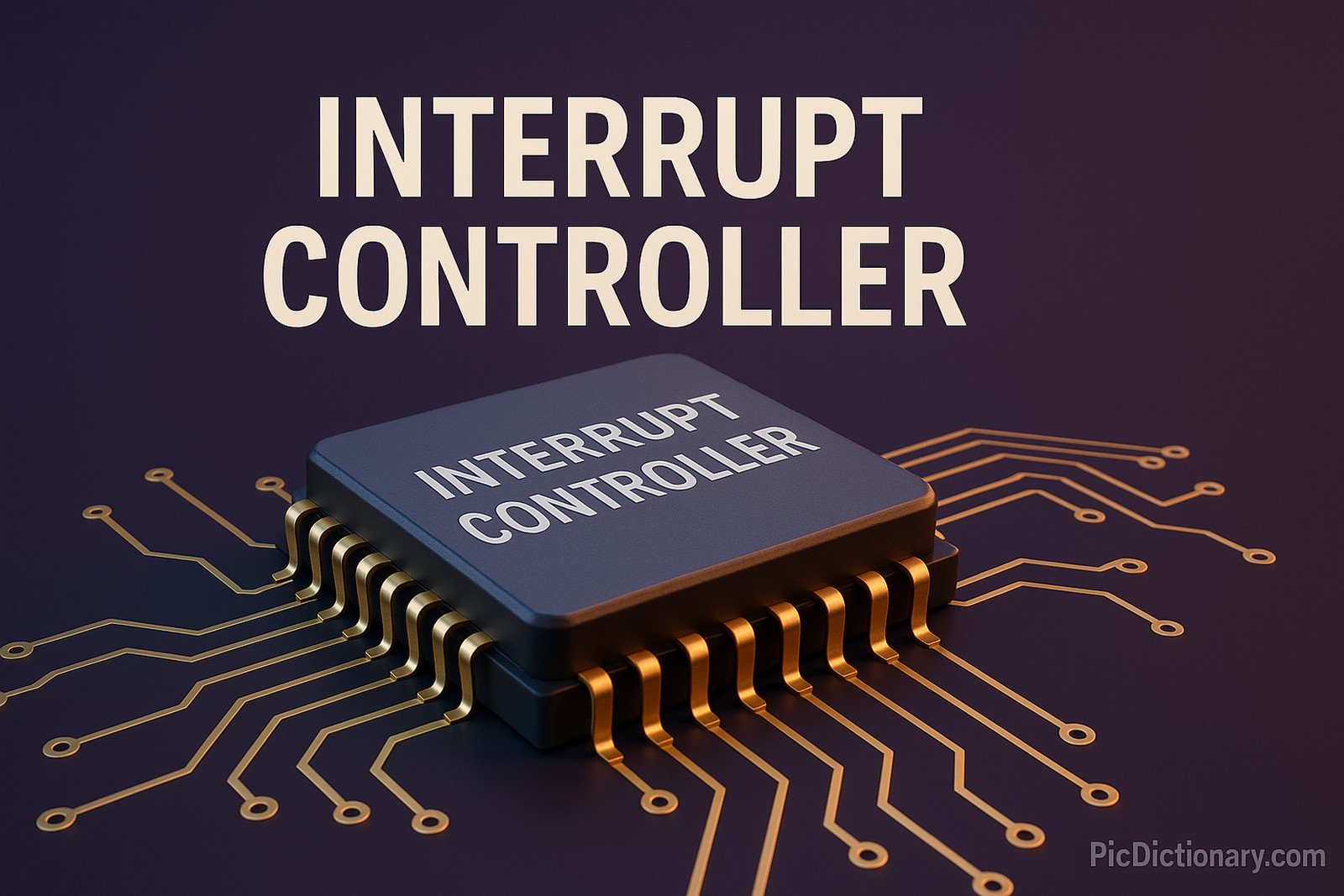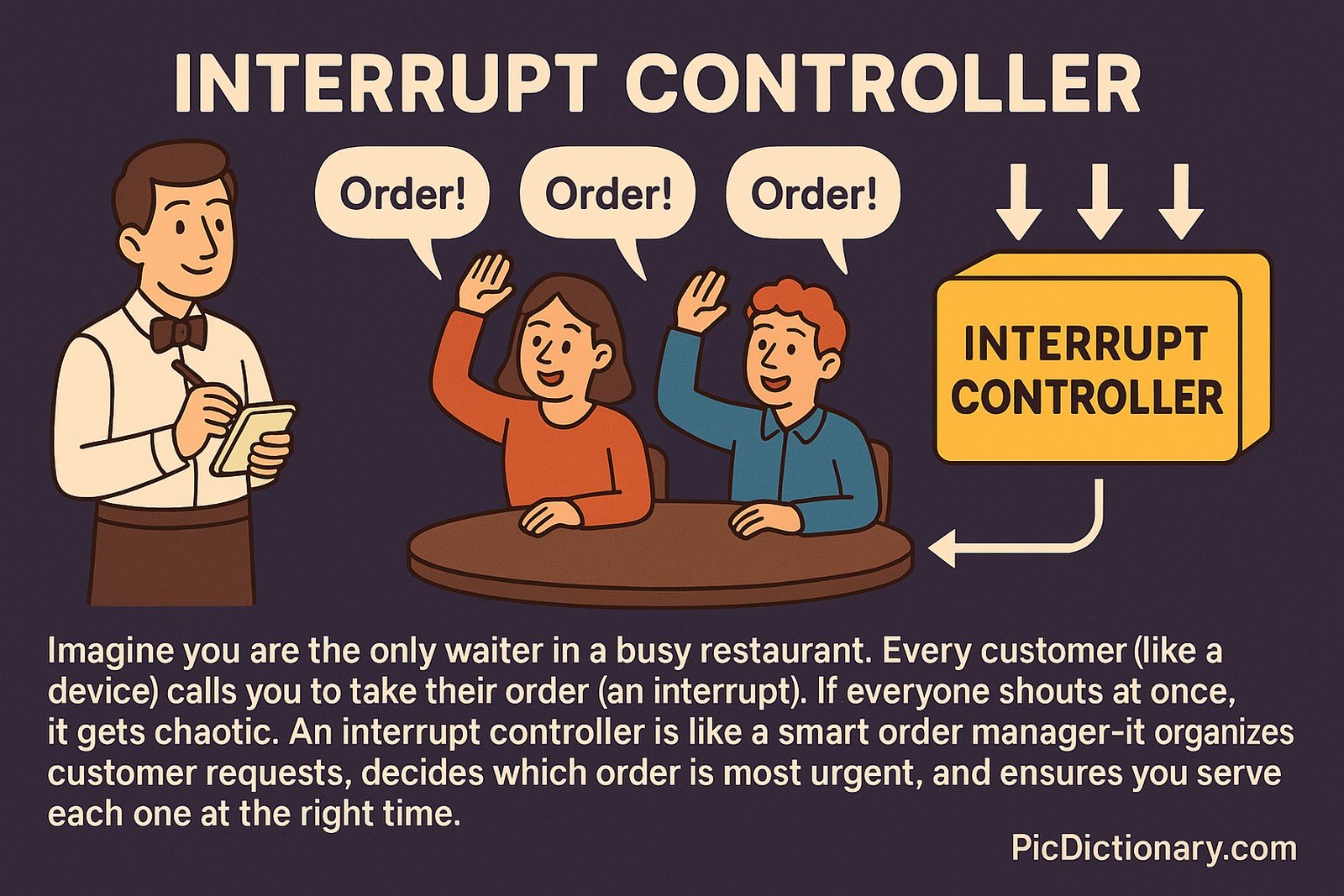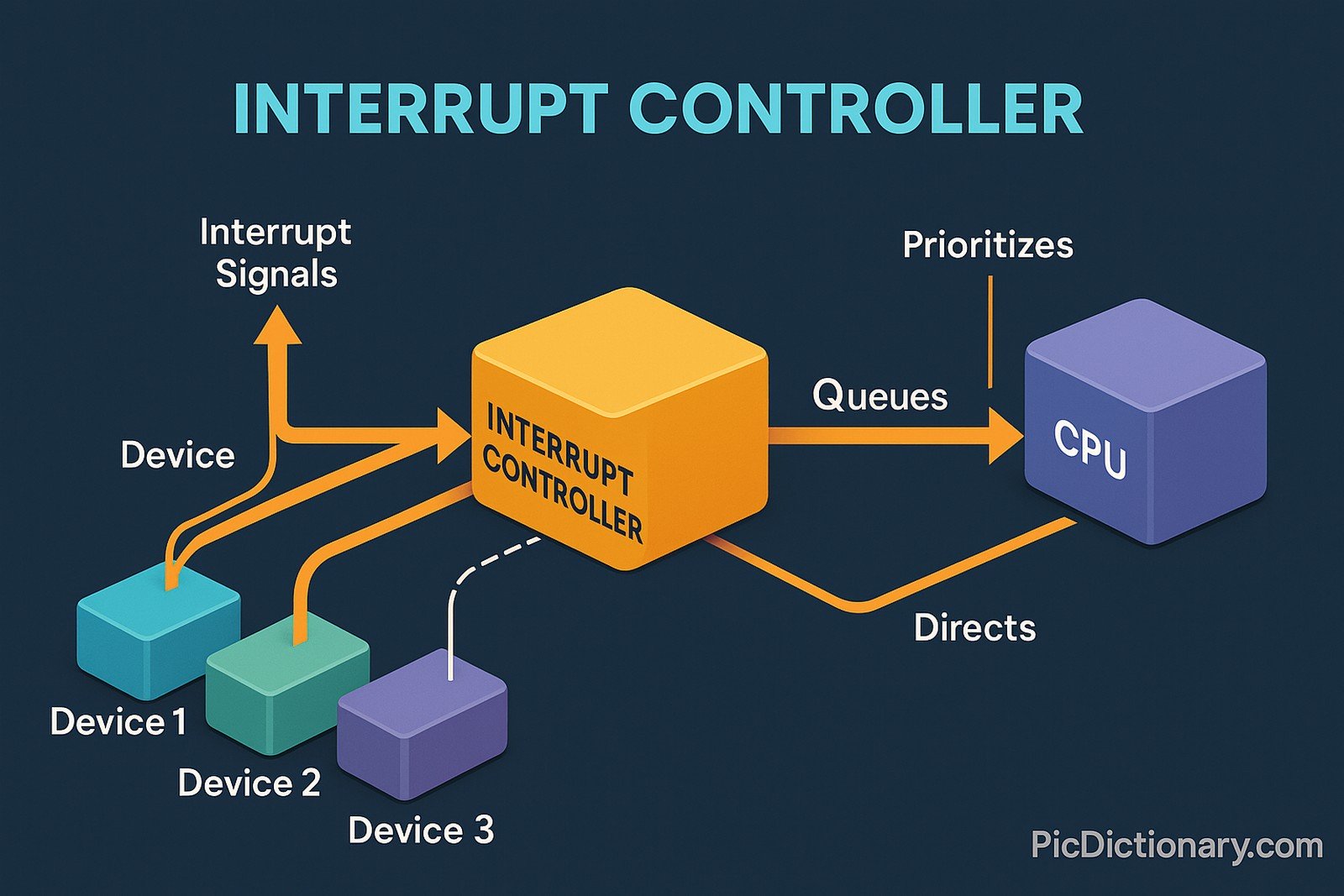Interrupt Controller

Quick Navigation:
- Interrupt Controller Definition
- Interrupt Controller Explained Easy
- Interrupt Controller Origin
- Interrupt Controller Etymology
- Interrupt Controller Usage Trends
- Interrupt Controller Usage
- Interrupt Controller Examples in Context
- Interrupt Controller FAQ
- Interrupt Controller Related Words
Interrupt Controller Definition
An Interrupt Controller is a hardware or software mechanism responsible for managing interrupt signals from different devices to the CPU. It prioritizes, queues, and directs these signals to ensure the processor handles them in an orderly and efficient manner. Interrupt controllers are essential in modern computing, optimizing system performance by allowing devices like keyboards, network cards, and storage units to signal the CPU asynchronously. Advanced implementations, such as the Advanced Programmable Interrupt Controller (APIC), enhance multiprocessing systems by distributing interrupts across multiple CPU cores.
Interrupt Controller Explained Easy
Imagine you are the only waiter in a busy restaurant. Every customer (like a device) calls you to take their order (an interrupt). If everyone shouts at once, it gets chaotic. An interrupt controller is like a smart order manager—it organizes customer requests, decides which order is most urgent, and ensures you serve each one at the right time. This way, you handle everything efficiently without forgetting any requests.
Interrupt Controller Origin
The concept of interrupt handling has been around since early computing, dating back to the 1950s. With the advent of multi-tasking operating systems, the need for efficient interrupt management led to the development of dedicated interrupt controllers. Early implementations, like the Intel 8259 PIC (Programmable Interrupt Controller), set the foundation for modern advanced interrupt management systems.
Interrupt Controller Etymology
The term "interrupt" originates from Latin "interrumpere," meaning "to break in between," while "controller" signifies a device that manages operations. Together, "interrupt controller" refers to a mechanism that controls interruptions in a computing system.
Interrupt Controller Usage Trends
Interrupt controllers have evolved significantly with advancements in computing. Early personal computers relied on simple PICs, but modern architectures utilize APICs and Message-Signaled Interrupts (MSI) to handle complex multi-core processing. As real-time computing and edge computing grow, efficient interrupt handling continues to be a key focus in system design.
Interrupt Controller Usage
- Formal/Technical Tagging:
- Embedded Systems
- Computer Architecture
- Real-Time Computing - Typical Collocations:
- "Programmable Interrupt Controller"
- "Interrupt priority handling"
- "Multi-core interrupt processing"
- "Hardware interrupt management"
Interrupt Controller Examples in Context
- The Programmable Interrupt Controller in older PCs allowed the CPU to manage multiple devices efficiently.
- Advanced systems use an APIC to distribute interrupts across multiple processor cores, improving performance.
- Real-time systems, such as automotive control units, rely on precise interrupt handling to ensure safe operation.
Interrupt Controller FAQ
- What is an interrupt controller?
An interrupt controller is a hardware or software component that manages and prioritizes interrupt requests sent to the CPU. - Why are interrupt controllers important?
They optimize CPU performance by efficiently handling multiple interrupt signals from hardware devices. - How does an interrupt controller work?
It collects interrupts, determines priority, and directs them to the processor in an organized manner. - What are the types of interrupt controllers?
The main types include the Programmable Interrupt Controller (PIC), Advanced Programmable Interrupt Controller (APIC), and Message-Signaled Interrupts (MSI). - What is the difference between PIC and APIC?
PICs are simpler and used in older systems, whereas APICs support more advanced and distributed interrupt handling, suitable for multi-core processors. - Can an interrupt controller improve system performance?
Yes, by managing and prioritizing interrupts effectively, it reduces CPU overhead and enhances responsiveness. - What happens if an interrupt controller fails?
The system may experience lag, crashes, or inability to process hardware requests properly. - Do modern processors still use PICs?
No, most modern processors use APICs or MSI to handle interrupts more efficiently. - How does an interrupt controller help in real-time computing?
It ensures time-critical tasks receive immediate attention, which is crucial in medical devices, aviation, and automotive systems. - Is an interrupt controller a software or hardware component?
It can be both. Hardware-based controllers manage physical interrupts, while software-based solutions handle virtualized environments.

Interrupt Controller Related Words
- Categories/Topics:
- Computer Hardware
- Operating Systems
- Embedded Systems
Did you know?
In early computers, interrupt management was entirely manual, requiring software-driven polling to check device statuses. The introduction of the Programmable Interrupt Controller (PIC) in the 1970s automated this process, significantly improving system efficiency. Today, sophisticated APICs enable seamless multi-core processing, making modern computing more responsive and powerful.
PicDictionary.com is an online dictionary in pictures. If you have questions or suggestions, please reach out to us on WhatsApp or Twitter.Authors | Arjun Vishnu | @ArjunAndVishnu

I am Vishnu. I like AI, Linux, Single Board Computers, and Cloud Computing. I create the web & video content, and I also write for popular websites.
My younger brother, Arjun handles image & video editing. Together, we run a YouTube Channel that's focused on reviewing gadgets and explaining technology.



Comments powered by CComment